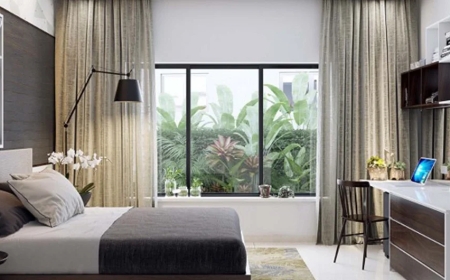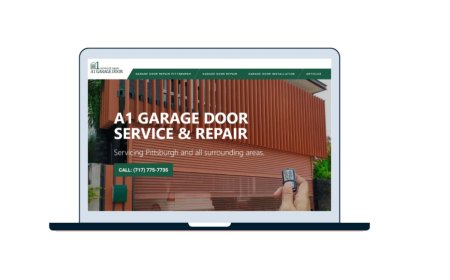Your Guide to Mold Detection, Inspection, and Testing in Contra Costa County Home and Business
Whether you're a homeowner or renter, early detection can save your property—and your health.

Introduction Why Mold Detection Is Crucial in Contra Costa
Mold is one of the most overlooked threats to indoor air quality and structural safety in Contra Costa homes. With a mix of coastal air, seasonal rains, and diverse building ages, homes in cities like Walnut Creek, Concord, and Richmond are often at risk of developing hidden mold problems.
This guide outlineseasy steps to detect mold problems in Contra Costa homesbefore they become expensive and dangerous. Whether you're a homeowner or renter, early detection can save your propertyand your health.
Understanding How Mold Forms in Homes
Mold thrives in areas wheremoisture, warmth, and organic materialcombine. It only takes 24 to 48 hours for mold spores to settle and begin growing in the right conditions. Common causes include:
- Leaky pipes or roofs
- Poor ventilation in bathrooms and attics
- Flooding or condensation
- High indoor humidity
Mold can remain hidden for months, spreading spores and silently impacting health.
Why Contra Costa Homes Are Vulnerable to Mold
Contra Costa Countys climate is a major contributor. Factors include:
- Coastal fog and dampness in western areas
- Old plumbing and poorly sealed windows in aging homes
- Limited airflow in multi-story homes or those built into hillsides
These conditions create ideal environments for mold, especially when not routinely inspected.
Step 1 Start With Your Nose: Smell for Mold Odors
One of the first and easiest ways to detect mold is by smelling for it. Mold typically has amusty, earthy, or stale odor, especially in damp corners, basements, or behind walls.
If you notice persistent odors that don't go away with cleaning, hidden mold may be present.
Step 2 Visually Inspect Common Problem Areas
Focus on rooms and areas prone to moisture buildup:
- Kitchens:Under sinks and behind refrigerators
- Bathrooms:Around tubs, showers, and behind toilets
- Attics and crawlspaces:Poor ventilation often causes mold
- Basements and garages:Concrete can trap moisture
- Exterior walls:Especially shaded or poorly insulated ones
Use your eyes and pay attention to anything that looks out of place.
Step 3 Look for Discoloration and Staining
Mold can appear in many forms:
- Black, green, or whitepatches
- Brown or yellowstainson ceilings and walls
- Peeling paintor bubbling wallpaper
These visual signs often mean theres more damage behind the surface.
Step 4 Check for Moisture and Condensation
Excess moisture is a mold magnet. Check:
- Window sillsfor condensation
- Under sinks and behind toiletsfor leaks
- Basement cornersfor standing water
- Ceiling cornersafter rains
Catch water issues early to prevent mold formation.
Step 5 Monitor for Physical Symptoms in Your Family
Your body might tell you theres a problem before your eyes can. Watch for:
- Sneezing or nasal congestion indoors
- Itchy eyes or skin irritation
- Asthma flare-ups that worsen at home
- Fatigue or chronic coughing
These could be reactions to airborne mold spores in your living space.
Step 6 Use a Flashlight to Examine Hidden Spaces
Take a flashlight and check:
- Inside cabinets and closets
- Behind large furniture and appliances
- In crawlspaces, basements, and attics
These shadowy spots are often overlooked during routine cleaning but are prime locations for mold.
Step 7 Perform a Humidity Check
Use ahygrometerto test indoor humidity. Levels above60%can encourage mold growth. Ideal humidity for a home is between30%50%.
If you dont have a hygrometer, recurring condensation or musty smells are strong indicators of high humidity.
Step 8 When to Call in aProfessional Mold Inspector
Even if you follow all the above steps, professional testing is crucial when:
- You've had previouswater damage
- You'rebuying or sellinga property
- Your family is experiencingunexplained health issues
- You smell mold butcant find the source
Thats when you need someone likeRick Bruce from Bay Area Mold Pros, who serves all of Contra Costa County.
Meet Rick Bruce Contra Costas Mold InspectionExpert
With years of experience and certifications,Rick Bruceoffers trusted,unbiasedmold inspectionthroughout the Bay Area. Unlike many services, Bay Area Mold Pros focuses solely on testingnot remediationso theres no pressure to sell you cleanup work.
Call (650) 762-6228
What You Get From Bay Area Mold Pros for $595
One flat rate. No surprise fees. Heres what you receive:
- In-home visual inspection
- Air and surface sample collection
- Certified lab analysis
- Written mold report with findings and recommendations
Everything you need to make informed decisions about your homes safety.
How Professional Tools Enhance Mold Detection
Rick uses professional-grade equipment to detect mold that eyes and noses cant:
- Moisture metersto find damp spots in walls
- Thermal camerasto locate temperature variations
- Air sampling pumpsto assess spore levels in different rooms
- Surface swabssent to certified labs for analysis
This approach ensures thorough, accurate results every time.
Benefits of Early Mold Detection for Homeowners
- Avoid costly repairsby catching mold early
- Improve air qualityand family health
- Document issuesfor landlords, tenants, or insurance
- Peace of mindduring real estate transactions
Dont wait for visible mold to actearly detection is far more effective.
FAQs Mold Inspection Tips and Advice for Contra Costa Homes
Q1: How do I know if I have mold or just dirt?
Mold usually has a fuzzy texture and smells musty. A mold inspector can confirm through lab testing.
Q2: Is the $595 fee really all-inclusive?
Yes! No extra chargesinspection, sampling, lab work, and reporting are included.
Q3: Should I test even if I cant see mold?
Absolutely. Hidden mold is common and can be harmful without visible signs.
Q4: Can mold cause serious illness?
Yes, particularly for individuals with allergies, asthma, or weakened immune systems.
Q5: Is the report from Bay Area Mold Pros legally usable?
Yes, the detailed report is suitable for legal, health, and real estate documentation.
Q6: What if I rent my home?
You still have the right to safe, mold-free living. Bay Area Mold Pros works with both renters and landlords.
Schedule Your Contra Costa Mold Inspection Today
If you're ready for a professional, honestmold inspection, take the next step:
- Call Rick Bruce at (650) 762-6228
- Visithttps://bayareamoldpros.com
- $595 flat rate No hidden fees, no guesswork, just expert answers
Conclusion Take Action to Protect Your Home and Health
Detecting mold early is easier than you thinkand far less costly than waiting too long. By following theseeasy steps to detect mold problems in Contra Costa homes, and partnering withRick Bruce at Bay Area Mold Pros, you can protect your property, your health, and your peace of mind.





































